
The Relationship Between North and South Korea – Part 2 – South Korea’s Attitude Toward North Korea
In part one of this two part posting, we looked at background information on North Korea’s nuclear weapons and missile program in light of the United States recent announcement of the Washington Declaration which stated that America would use its nuclear might to protect South Korea. In the second part of this posting, we’ll look at the attitudes of South Koreans toward North Korea’s weapons programs and the perception of the threat and their preferred actions.
In November 2022, the Asan Institute for Policy Studies undertook a poll which was published in April 2023 as “Transitioning Attitudes on North Korea: Perceived Threat and Preferred Response“:
Asan researchers asked South Koreans how they felt about North Korea and the evolving threat and compared these responses to those in the past as well as comparing attitudes among various demographic groups. Let’s look at some of the key findings of the study:
1.) South Koreans’ image of North Korea: Respondents were asked about the words that come to mind when they hear the words “North Korea”. Responses were as follows:
Dictatorship under Kim Jong-un – 34.2 percent
Nuclear weapons – 32.3 percent
Korean unification – 12.5 percent
Socialist political system – 8.7 percent
Inter-Korean economic cooperation – 6 percent
Planned economy – 1 percent
Negative images of North Korea were highest at 66.5 percent with positive images being expressed by 18.5 percent and neutral images being expressed by 9.7 recent of respondents. Negative perceptions were highest among South Koreans over the age of 60 (77 percent) and in their 30s (76 percent) with the lowest negative perceptions among those in their 40s (56.3 percent).
2.) North Korea as a security risk: Pollsters asked respondents to prioritize the following threats: “North Korea’s nuclear threat,”“China’s rise,”“new Cold War paradigm,”“spread of terrorism,” “infectious diseases, such as COVID-19,” “climate change,” and “supply chain insecurity.” Here is a graphic summarizing the results, showing both the first and second responses:
Traditional security concerns were viewed as the most significant challenge by 72.3 percent of respondents. North Korea was deemed to be the most critical security concern among South Koreans with 67.4 percent deeming that North Korea was either the first- or second-most issue of concern. This is roughly the same as the next two traditional security concerns, the Cold War and China.
Pollsters then expanded the security risk issues with North Korea, specifying the nation’s nuclear program. In 2020, 59.2 percent of South Koreans expressed interest in North Korea’s nuclear program; this rose to 80.9 percent in 2022 as shown on this graphic:
Surprisingly, among the 80.9 percent, only 30 percent were extremely interested with the remaining 50.9 percent being only somewhat interested.
If we look back in time, we can see that South Koreans’ negative views on South Korea’s national security has varied widely over the past decade:
The current level of 70.7 percent is the highest on record, substantially higher that the previous peaks of 63.3 percent in February 2013 and 60 percent in March 2016, with both of those peaks coinciding with North Korea’s third and fourth nuclear tests.
3.) Responding to the North Korean nuclear threat: As a proxy for South Korean attitudes about a United States security guarantee, pollsters asked respondents whether the U.S. would use nuclear weapons to defend South Korea in response to a hypothetical nuclear attack by North Korea. Here is a graphic showing how the response to this question as evolved over time:
The belief that the United States would use nuclear weapons to defend South Korea was highest among those aged 60 and older at 66.3 percent and those in their 20s at 55.8 percent and lowest among those in their 40s at 43.6 percent. When asked whether the United States would intervene militarily to defend South Korea in the event of an attack by North Korea (i.e. not necessarily using nuclear weapons), approximately 90 percent of South Koreans believe that Washington will come to their defense.
When asked if they supported the development of a domestically spearheaded nuclear program, 64.3 percent of respondents expressed support. The highest support was found among those aged 60 and older at 80.3 percent and lowest among those their 20s at 53.1 percent. When asked if the United States should deploy nuclear weapons in South Korea, 61.1 percent of respondents expressed support. The highest support was among those aged 60 and older at 79.7 percent and lowest among those in their 40s at 36.1 percent.
Let’s close this posting with a quote from the study:
“Given that the Yoon administration will likely maintain a firm policy towards North Korea in 2023, we expect Pyongyang to not let up on its provocation for the foreseeable future. We also do not have any reason to believe that we will see a significant improvement in inter-Korean relations. With South Korean sentiments being negative toward North Korea, the South Korean public will likely support a strengthened deterrence posture. If the policymakers are serious about non-proliferation, they must keep the public informed about the costs of nuclear armament while working to rebuild trust in extended deterrence. In this regard, the leaders should embrace more public debate on these issues and strengthen bilateral and trilateral security cooperation in and around the Korean Peninsula.”
The geopolitical situation on the Korean Peninsula is a powder keg. All that it will take is one itchy finger on a trigger to start what will surely be a deadly war of attrition just as it was between 1950 and 1953 with resulted in the deaths of between two and three million civilians and over 650,000 casualties for the South Koreans and United Nations forces, nearly 500,000 casualties for Chinese forces and at least 500,000 casualties for North Korean forces. The potential for the first use of nuclear weapons since 1945 is certainly a concern given that all parties to the North Korea/South Korea/United States seem to believe that using such weapons is the only way to protect themselves.

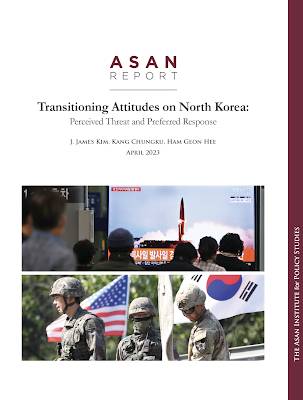
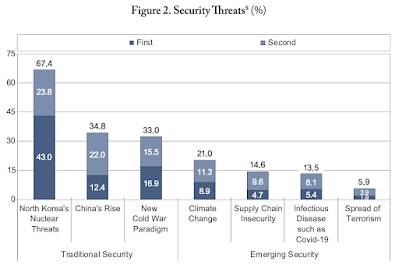
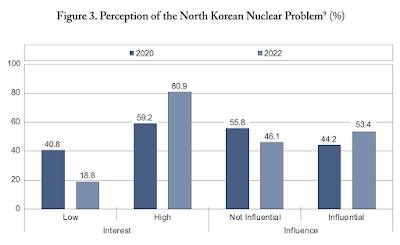
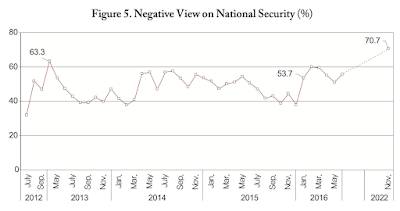
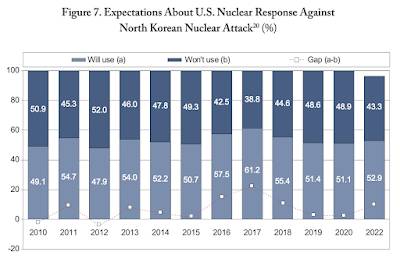
Be the first to comment